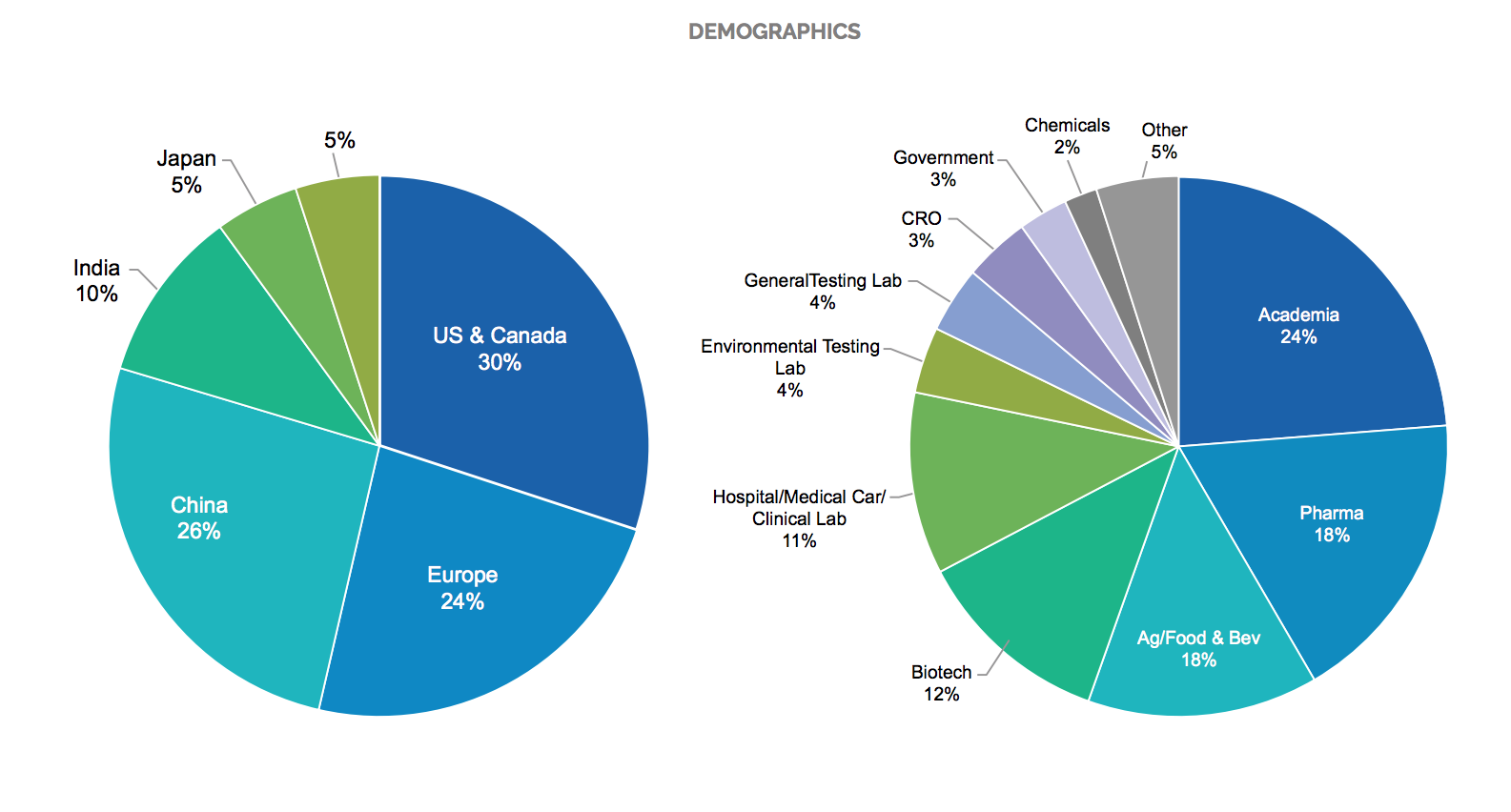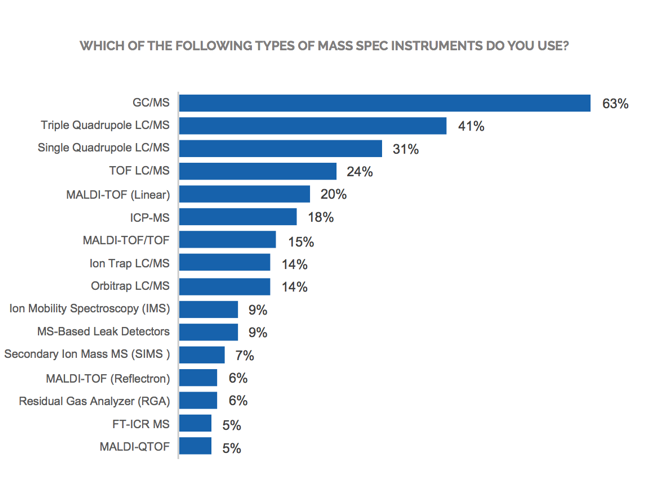Mass Spectrometry: A Technology and Market Overview
In our previous post we highlighted recent advancements within the mass spectrometry (MS) market. Key suppliers in the mass spec industry (i.e Thermo Fisher, Aglient, SCIEX, etc.) showcased their newest technologies at the ASMS Conference held in June and many formed partnerships to improve life science applications of mass spec. Our recently published 2018 Mass Spectrometry Market Analysis and Perspectives report delves deeper on how the market has evolved and what is expected to come over the next five years.
This article highlights a few technologies covered within our report as well as the overall market outlook for mass spectrometry.
GC/MS, quadrupole, TOF, Ion Trap, and ICP-MS are amongst the top used MS techniques. The table below outlines select advantages and disadvantages of each.
| MS Techniques | Advantages | Disadvantages |
|---|---|---|
| Quadrupole | Easily interfaced to most ionization methods • Good reproducibility • Small and inexpensive | • Limited resolution, accuracy, and mass range • Peak heights are variable as a function of the mass, and must be tuned • Not well-suited for pulsed ionization methods |
| Time of Flight (TOF) | • Fastest MS analyzer • Well-suited for pulsed ionization methods • High ion transmission | • Requires pulsed ionization method or ion beam switching • Fast digitizers used for TOF may have limited dynamic range • Linear TOFs are low resolution and incapable of MS/MS |
| Ion Trap | • High sensitivity • Multi-stage mass analyzer (can perform MS-MS & MSn) • Compact size | • Poor quantitation and dynamic range • Collision energy not well-defined in CID MS/MS • Complicated sequence of parameters |
| Inductively-Coupled Plasma MS (ICP MS) | • Wide dynamic range • High sensitivity • Availability of isotopic information | • Sample matrix interferences • High cost • Difficulty with transient signals |
Based on the named advantages and responses from the 450+ mass spec end-users surveyed, they expect market growth over the next five years will be driven by quadrupole LC/MS, Orbitrap LC/MS, and MALDI-TOF, though GC/MS instruments are more widely used. We found that the mass spec market is expected to grow by 6.1% every year, reaching $7.3 billion by 2022.

Survey Demographics
While biomolecular analysis was one of the most commonly used applications of mass spectrometry, Quadrupole LC/MS applied markets are predicted to be the largest driver of growth, particularly in Asia. Quadrupole LC/MS applied markets are comprised of food, environmental labs, and clinical research labs. This shift is primarily due to the increase in regulations both domestic and international, for food safety and environmental monitoring applications. Though the single quadrupole is more versatile, the triple quadrupole allows for higher selectivity because it makes use of dual quadrupole mass analyzers in tandem. This may explain why the triple quadrupole is used more frequently used (41%) compared to the single quadrupole (31%).
Overall, Thermo Fisher and Agilent were by far the most popular vendors, each relied upon by half of scientists employing mass spec in their research. Again, this reflects an increased need for food safety, as both companies’ instruments are particularly prevalent in general/environmental testing labs. Regionally, end-users from Asia were more likely than other regions to have Agilent and Shimadzu as their mass spec suppliers, while end-users from Europe were more likely than other regions to have Bruker and Waters as their suppliers. In addition to SCIEX, these are the top vendors in the industry and all have a well-established base of both single and triple quadrupole systems. Our report further analyzes the market, broken by technology type across application areas, region, and vendors while also highlighting influential economic and political changes.
Mass spec is still a field of immense importance with many growing applications. Whether your company is already a market leader, or is hoping to carve out a bigger piece of the pie, knowing where the market is growing and how you can fulfill scientists’ unmet needs with new products is a winning combination. A helpful mix of survey data and carefully collected and segmented market data, our Mass Spectrometry Market Analysis and Perspectives report provides the information marketing executives and product managers need to be successful within this space.





